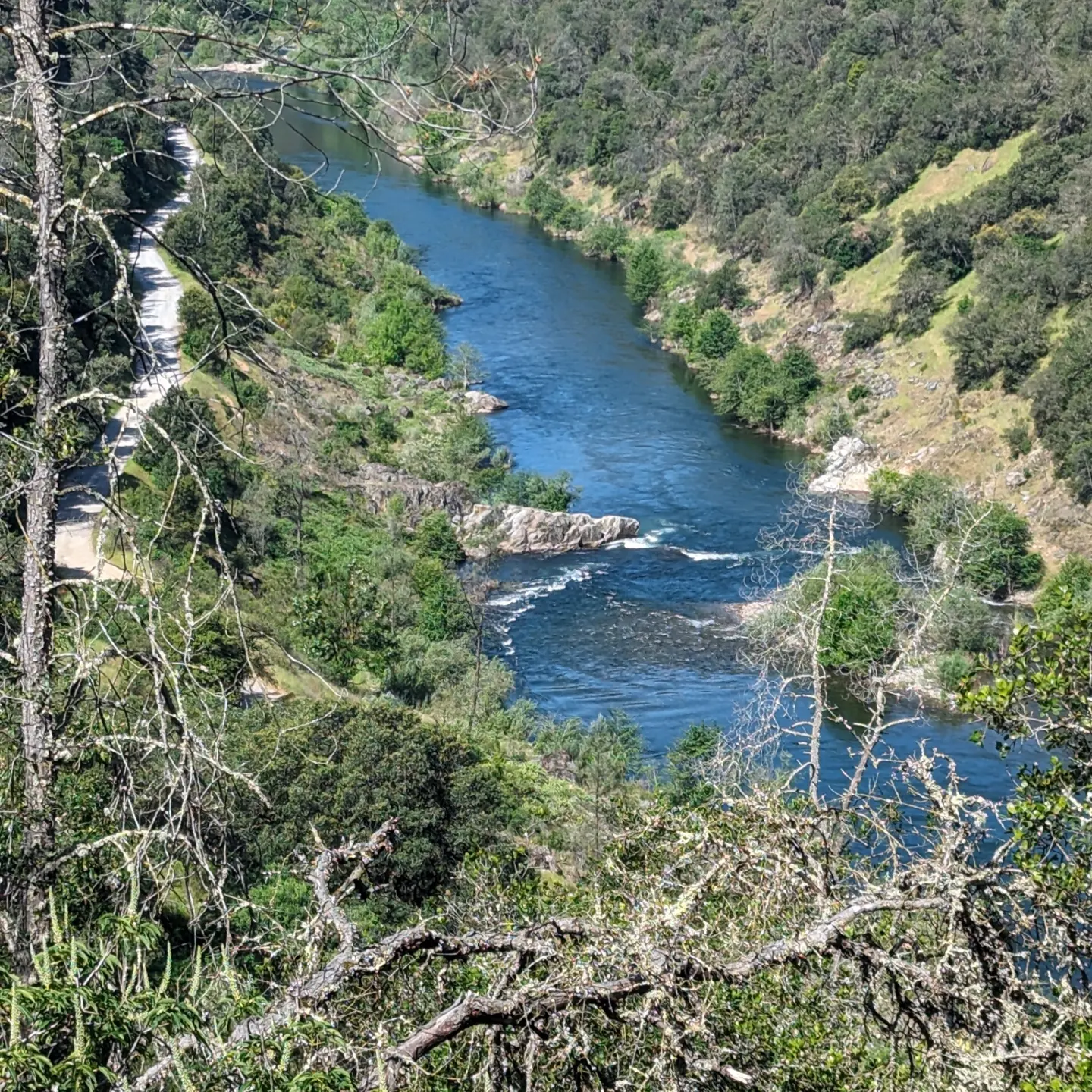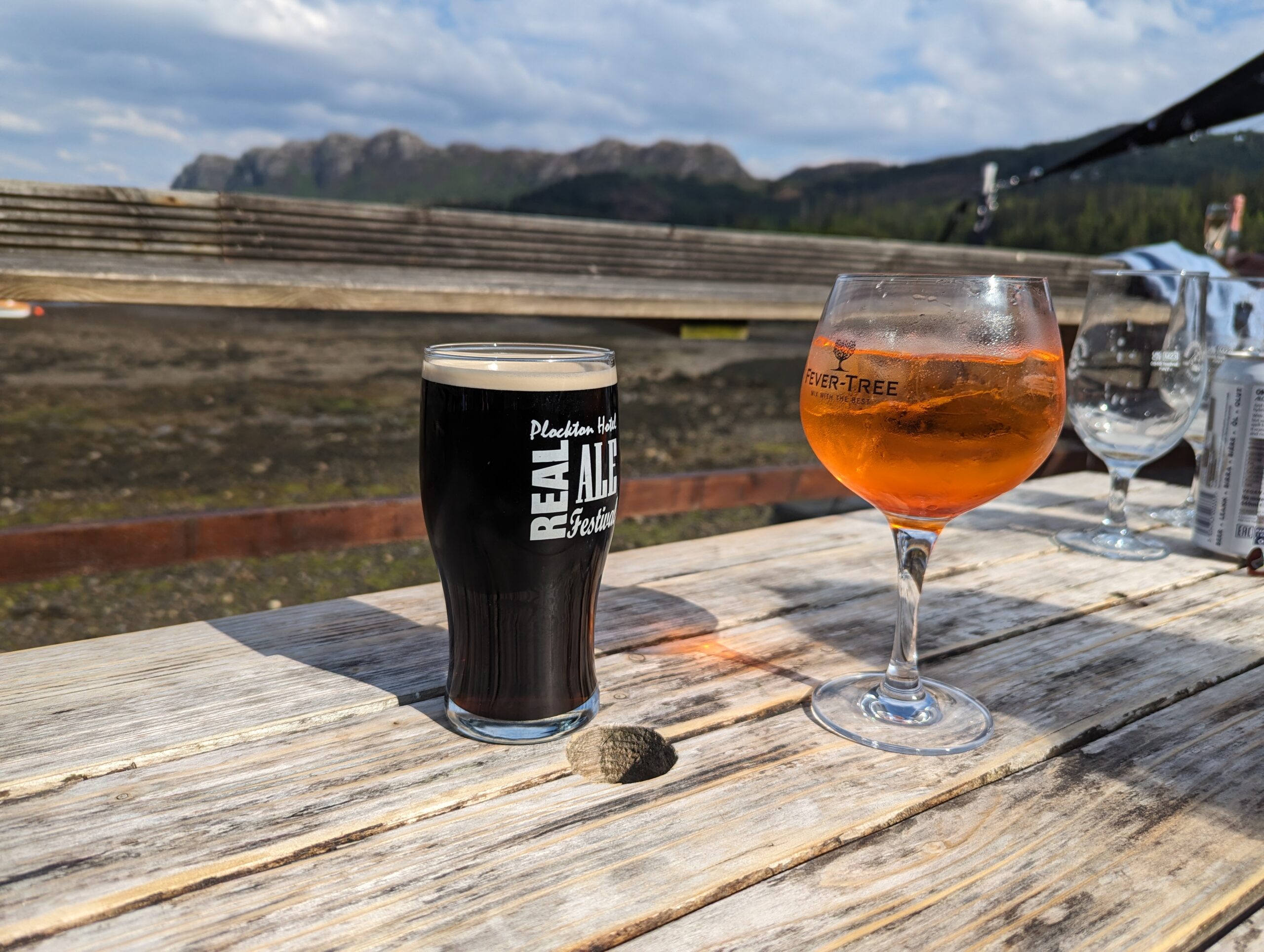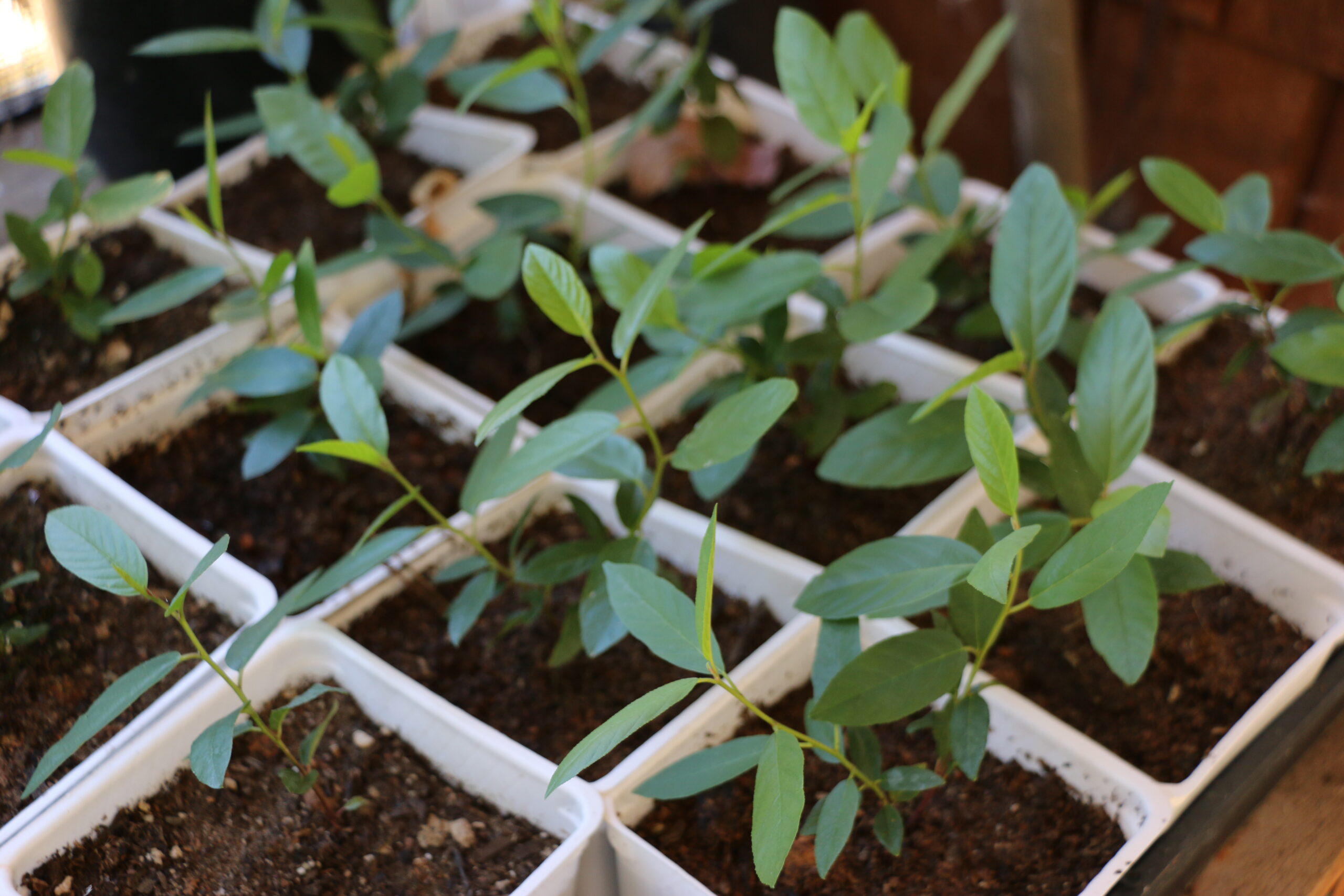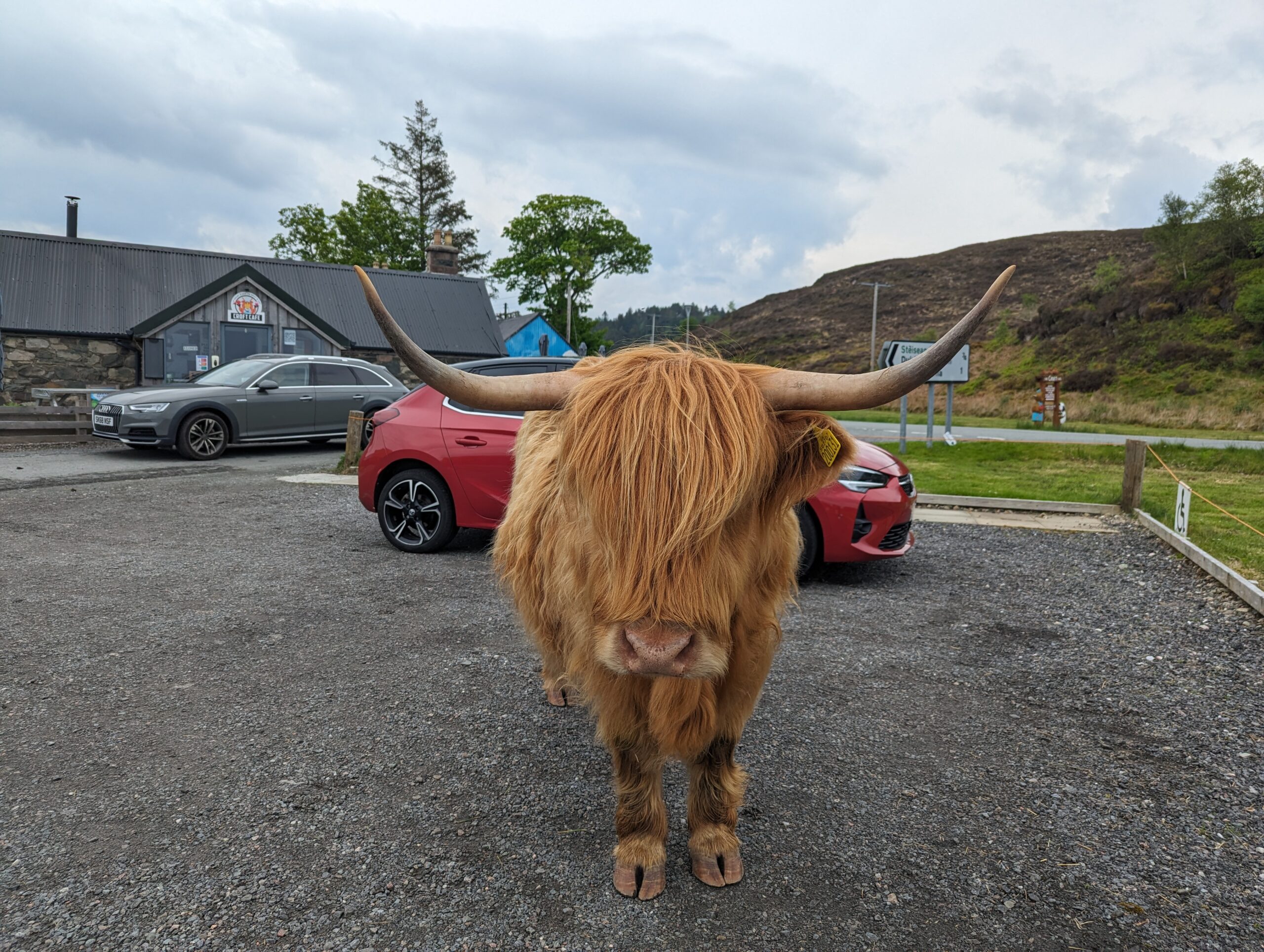This past Thursday we took the opportunity to hike in the American River canyon below Auburn. It’s a walk we do quite regularly while the weather isn’t too hot and this spring the wildflowers are out in abundance. Many of the plants, particularly the wildflowers, aren’t going to thrive in a designed and maintained landscape, but many of the native shrubs and trees will do quite well. Many times, over the years what I’ve noticed when viewing a “native” landscape is a lack of understanding from the designer’s viewpoint. In nature, each plant occupies its own space and selecting species and placing them accordingly will lend to the garden to a more “natural” look and feel.
The term “less is more” applies here. Let’s look at some examples from our hike. The path in the photo on the left winds to an overlook of the river. It’s not complicated, there is a large boulder thick with moss and ferns; oaks frame the path and the native shrubs that grow under the canopy are few in variety, but many in the number of individuals. Styrax redivivus (snowdrop bush) dominates while pipevine and chaparral clematis twine into the live oaks. On the right, grasses dominate along the old roadbed while western redbud (Ceris occidentalis) and mock orange (Philadelphus lewisii) flank the path.
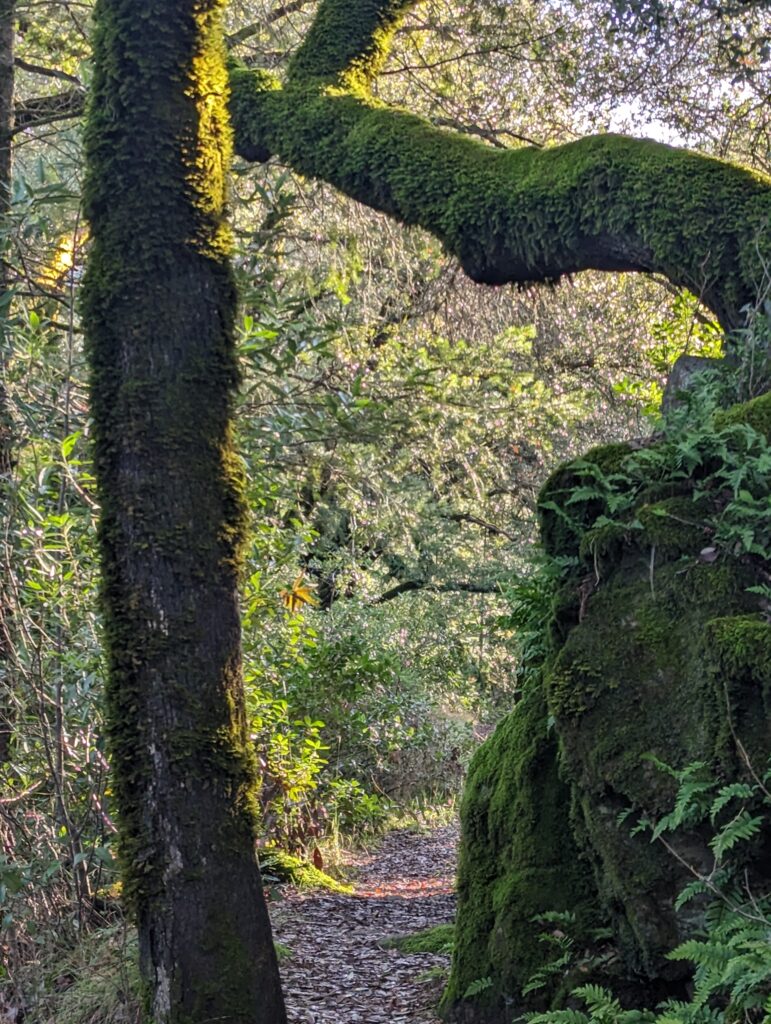
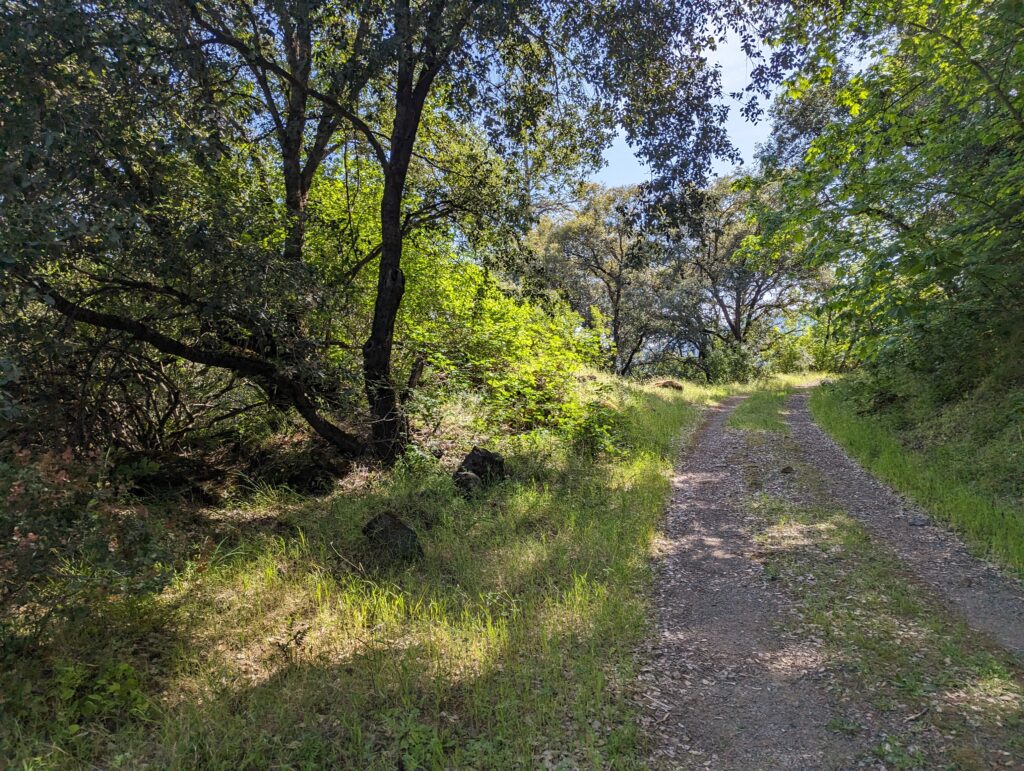
Water courses are running fast this spring, and the beautiful thing about a stream is that you seldom actually see the source of the water – as these photos below demonstrate.
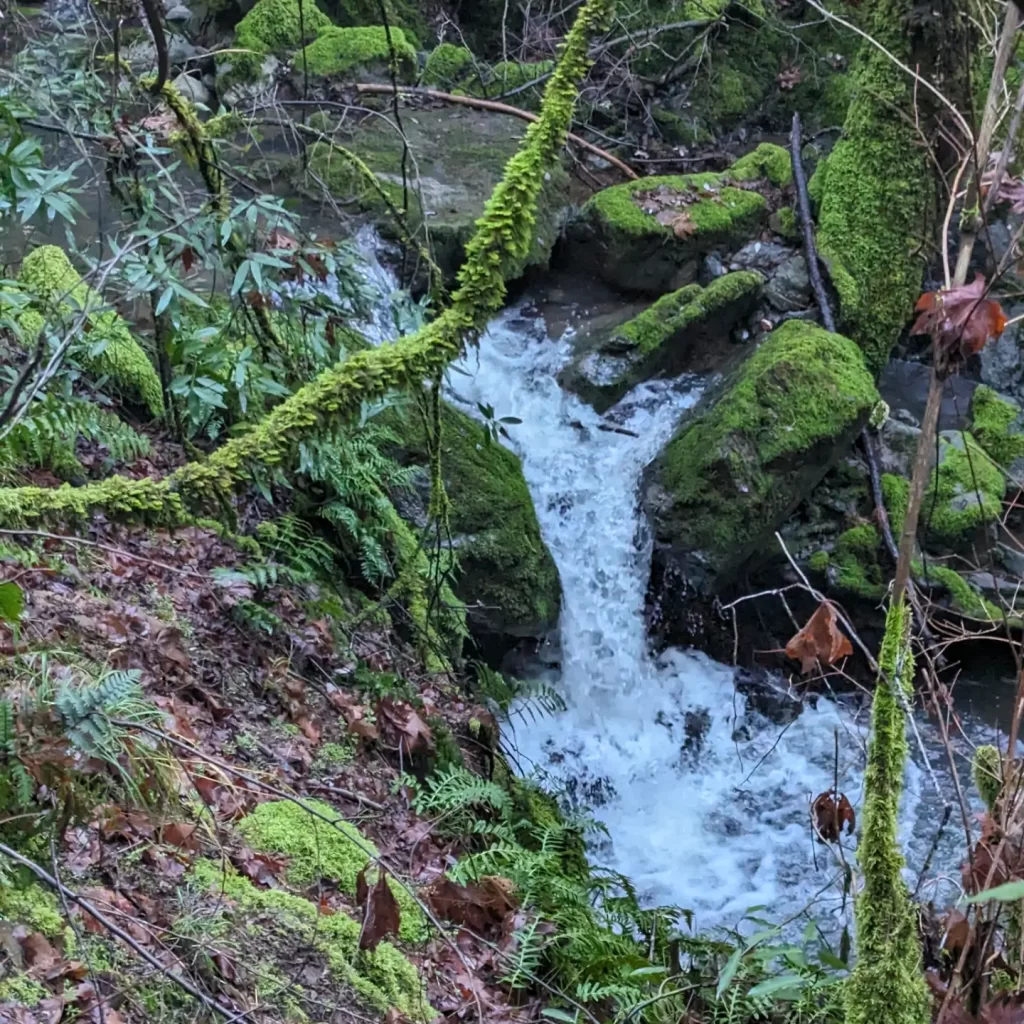
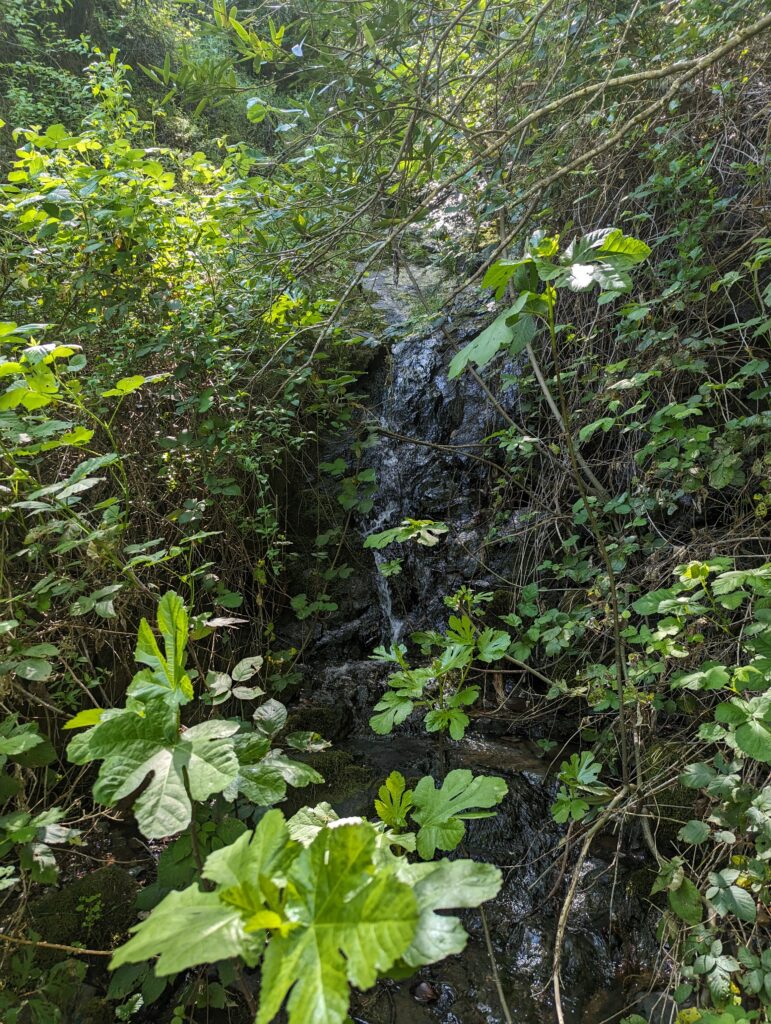
Often times, when I would do consulting, I would visit a client’s property where a water-feature/stream had recently been installed. I have literally seen “waterfalls” built right in the middle of a flat garden with stacked boulders and the “source” cascading out at the top and down into a small pool. Plants that would naturally be found further from the water’s edge in nature, are planted right at waterline.
My point is this – when designing the native garden, look to nature to be your guide. There are a limited number of plants that will grow right at the water’s edge. As you move further away different species dominate.
Each plant has its own preferred location or micro-climate. There is no reason we can’t use these clues to help us to design and install native gardens that actually look native and be beautiful.
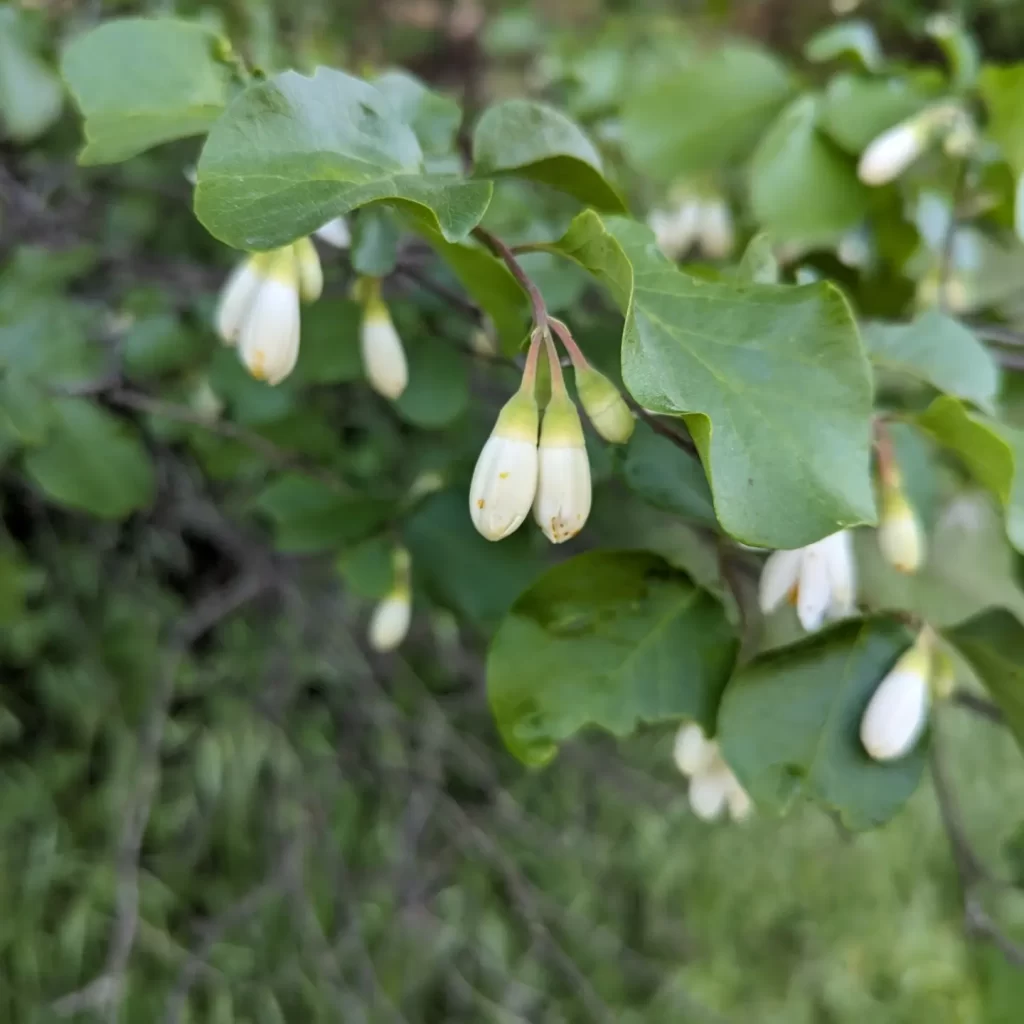
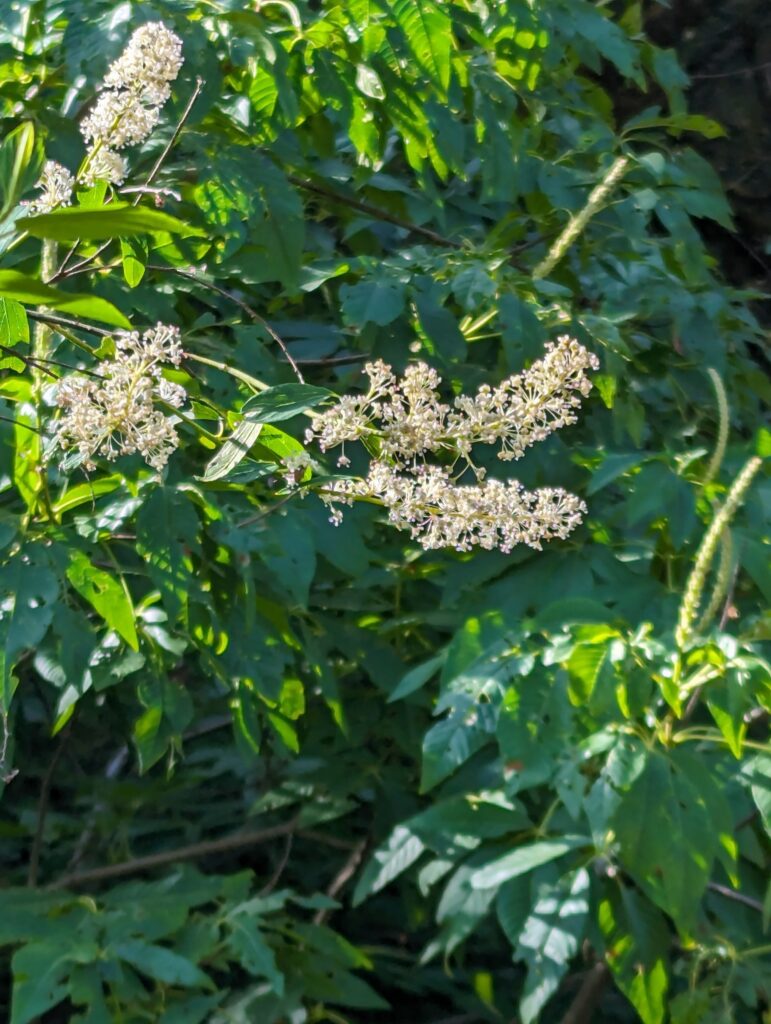
Above are two shrubs that I believe are certainly garden worthy. On the left is our snowdrop bush, Styrax redivivus, just coming into bloom. On the right is wild lilac or deer brush, Ceanothus integerrimus. Styrax has no fragrance, while the ceanothus has a wonderfully sweet perfume – and it’s a fantastic shrub for the pollinators. Once established, neither requires summer irrigation.
I love using native plants as much as possible, I love the idea of re-wilding our landscapes. I’d simply like to see it done a bit more tastefully.
Below are a few wildflower photos from our hike:

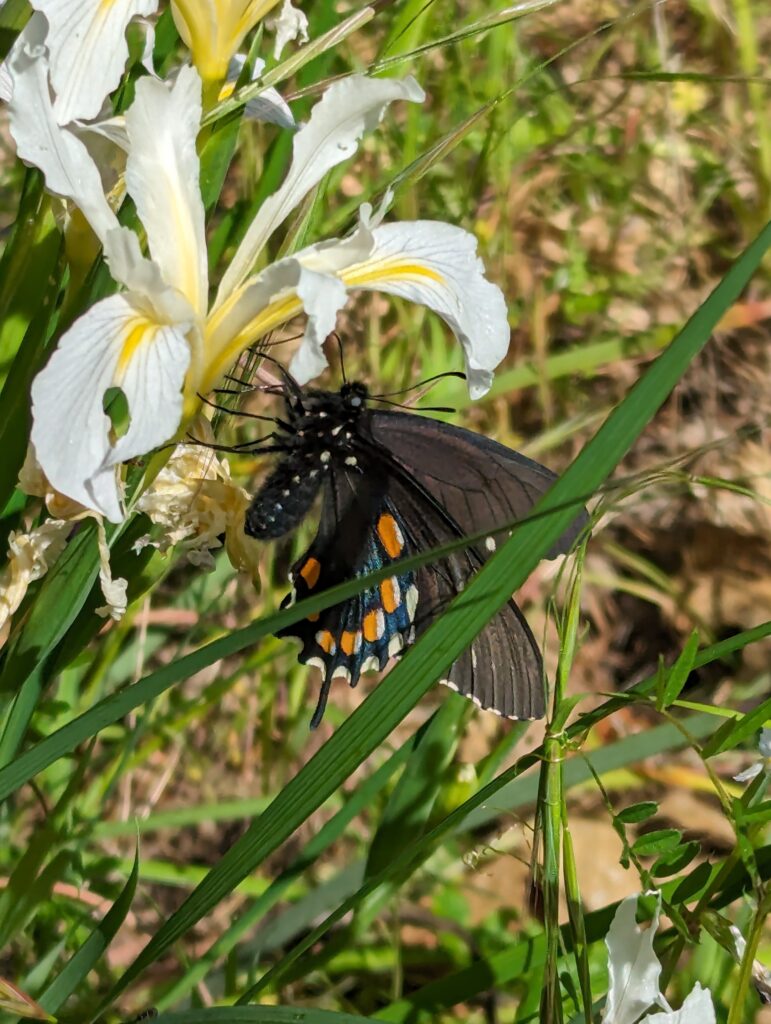

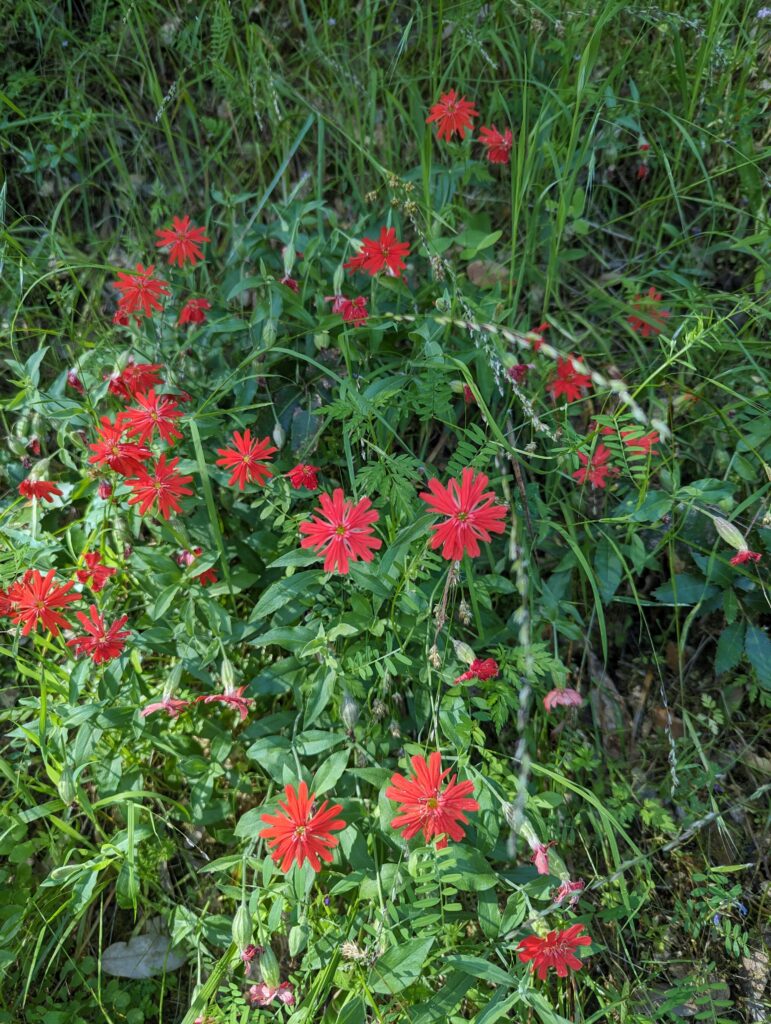
Tuesday we’re off to Scotland for two weeks. The next couple of posts will be of our travels through the Torridon region, the Isle of Skye and Edinburgh. Travel posts are on the horizon!
oh, one more thing…
Mid-70’s yesterday, pouring down rain today – maybe I put the tomato plants out a bit early…..
